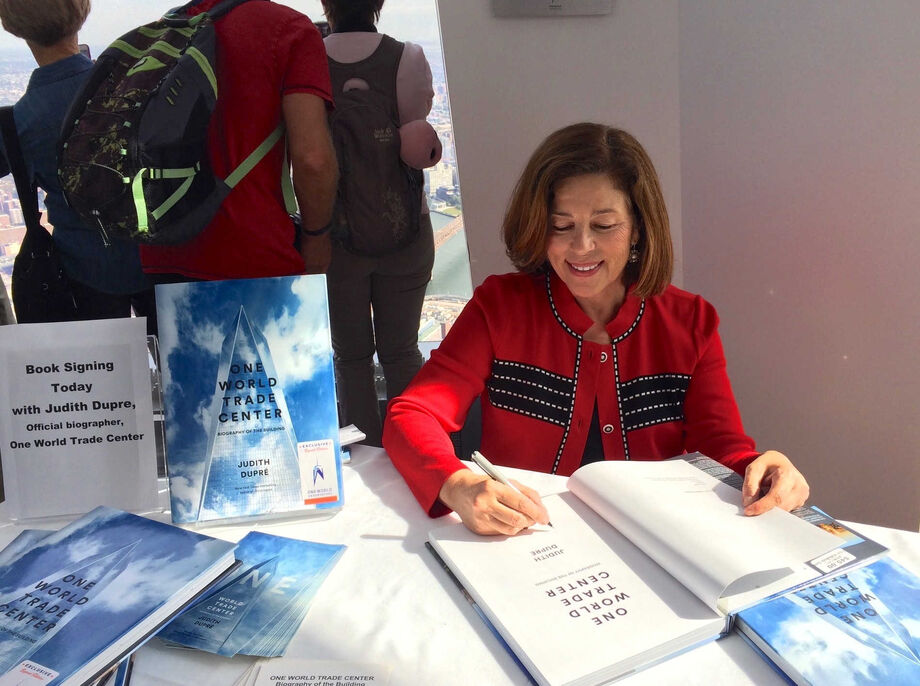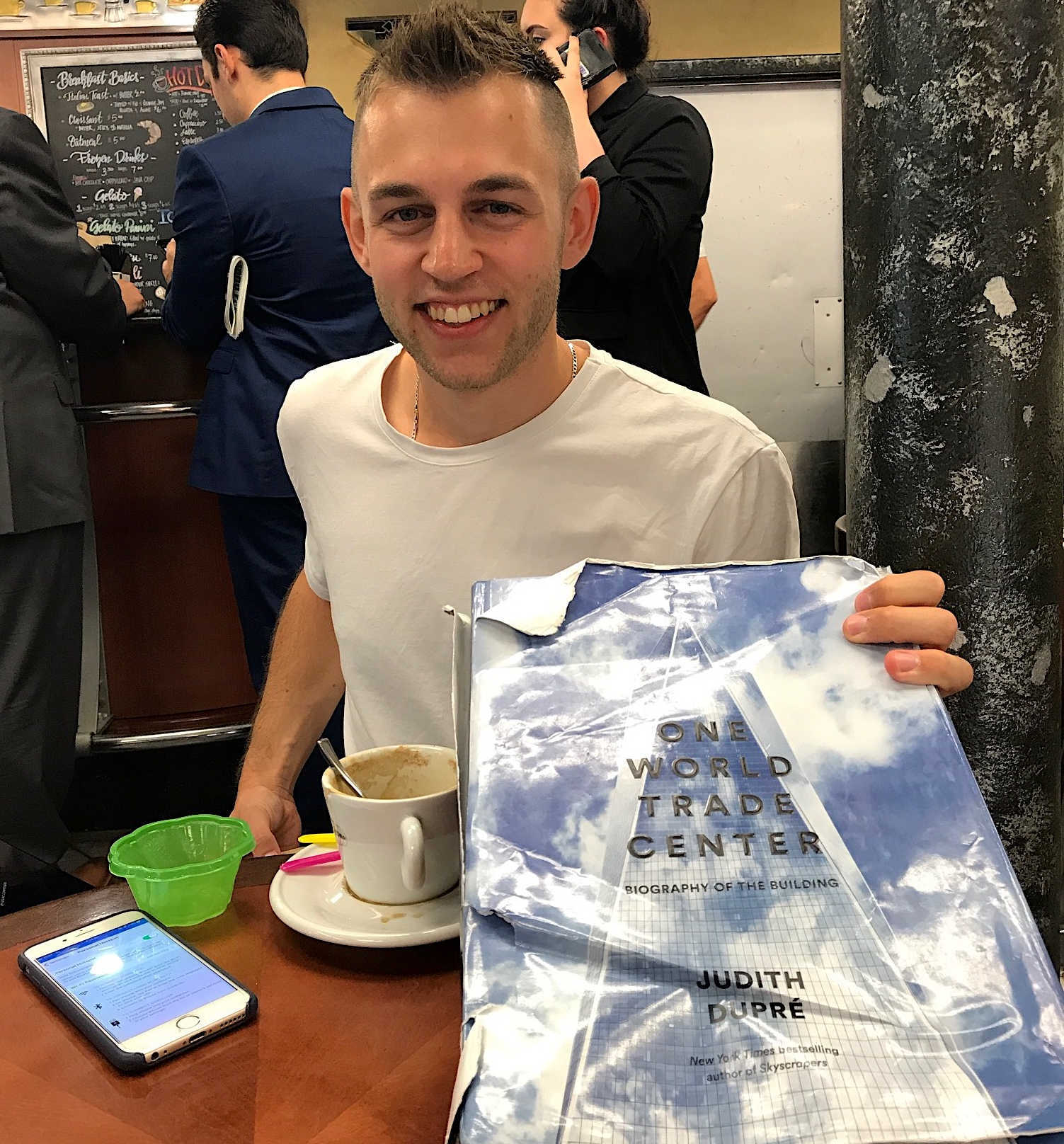
A sky-high book signing at the Observatory at the very top of One World Trade Center. Image courtesy of Judith Dupré.
From bridges and monuments to skyscrapers and churches, architectural historian Judith Dupré’s books offer visually-rich histories of the built environment. Her eighth work, One World Trade Center: Biography of the Building (2016), was the first book to be published with the support of an NEH Public Scholar grant, a grant that is designed to foster well-researched books for the public. Dupré’s book offers an unparalleled look into the making of One World Trade Center, beginning with the aftermath of September 11, 2001, and continuing through the construction of the new tower and the other major buildings at the site. It includes cutaway diagrams, historic images, time-lapse, and exclusive interviews conducted by Dupré with project stakeholders—the lead designers as well as workers in the trades. The book has been widely celebrated, featured in The New York Times, Architectural Digest, and CBS Sunday Morning. As Dupré describes it, the book is a “heroic American story of resilience, ingenuity, and hope.”
–Judith Dupré
